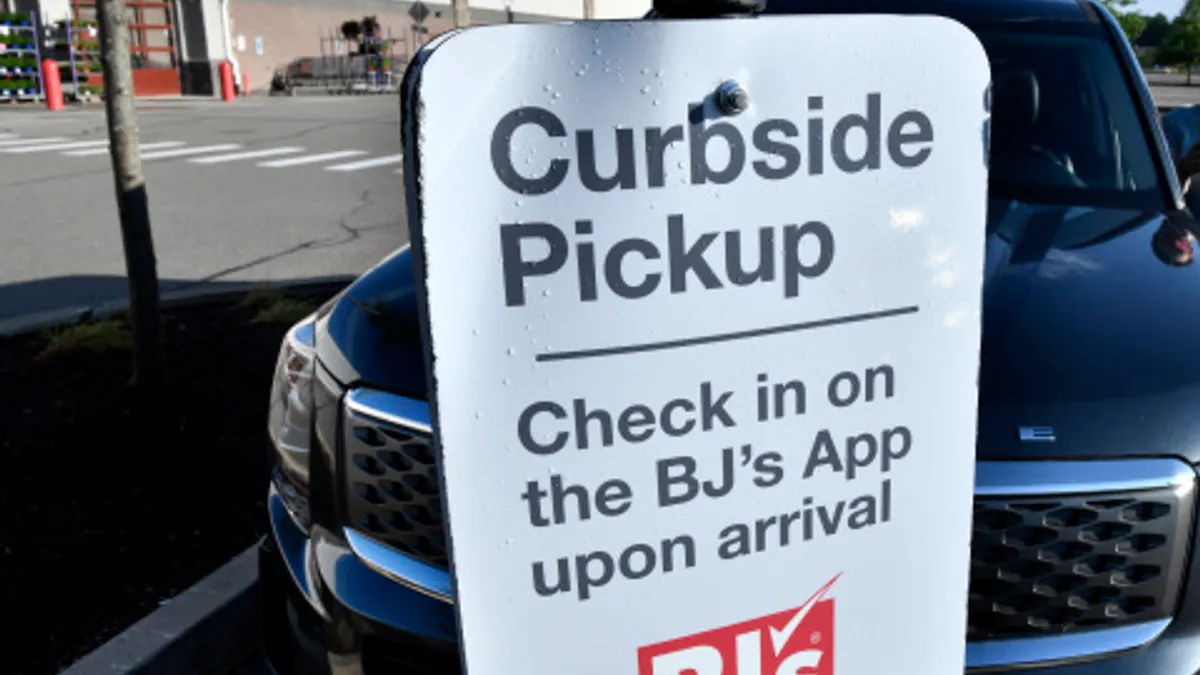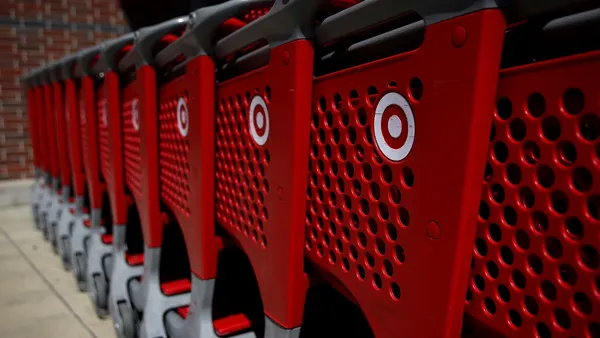Dive Brief:
- Grocery e-commerce sales dropped 3.1% year-over-year in September, to $7.5 billion, primarily due to a decline in order frequency during the month, according to statistics released Tuesday by Brick Meets Click and Mercatus.
- Pickup rose by 1.1 percentage points in September to account for 48.4% of online grocery sales, while delivery’s portion slipped to 34.9% and the ship-to-home segment fell to a 16.7% share.
- The online grocery sector posted its lowest order rate since the start of the COVID-19 pandemic last month, underscoring the challenges retailers face as they plot their digital strategies.
Dive Insight:
In a stark illustration of just how precipitously grocery e-commerce has fallen since online sales took off in early 2020, the average number of orders per monthly active user fell 8% in September compared with the same period in 2022, to 2.31, Brick Meets Click and Mercatus reported.
The figure is just 14% above the 2.03 orders per month recorded in August 2019, according to the research, which is based on a survey of 1,754 shoppers conducted on Sept. 28 and Sept. 29.
While pickup sales accounted for the biggest share of the online grocery market, that channel also posted the largest decline in average order value. The value of the average delivery order was flat, while the ship-to-home segment, which represents orders shipped by common carriers like UPS, dipped slightly. Overall, the average size of an online grocery order was down by 5% in September.
Online grocery sales were down year-over-year last month after posting a pickup-driven increase of 9% in August.
The research highlights a potentially alarming trend for grocers looking to run profitable online sales channels: The share of online customers who completed only one order last month came in at 37% — the highest percentage since before the pandemic began. Meanwhile, the proportion of online customers who placed at least three orders in September was down by nearly four percentage points.
On the other hand, the number of households that placed one or more online orders during the month was up 11% year-over-year. That pushed the total number of orders the industry saw during the month up by nearly 2%.
Notably, the base of monthly active users among mass retailers like Walmart grew 20% while the comparable figure for supermarkets was under 1%. In addition, mass retailers saw order frequency fall 4%, while supermarkets absorbed a drop of 13%.
Supermarkets saw the average size of the online orders they received remain steady even as mass retailers posted a 9% decline. Brick Meets Click and Mercatus pointed out, however, that mass merchants may well have experienced that drop because new online customers tend to spend markedly less than shoppers with more experience buying groceries via e-commerce.
Sylvain Perrier, president and CEO of Mercatus, suggested that traditional grocers take steps to differentiate themselves from mass retailers in the race to attract online shoppers, noting that bringing on new digital shoppers can be especially difficult.
“To compete more effectively, in addition to promoting more types of money-saving offers such as loyalty rewards, bundled deals, or other promotions, grocers can emphasize the quality, service, and convenience they offer that big-box retailers don’t,” Perrier said in a statement.














